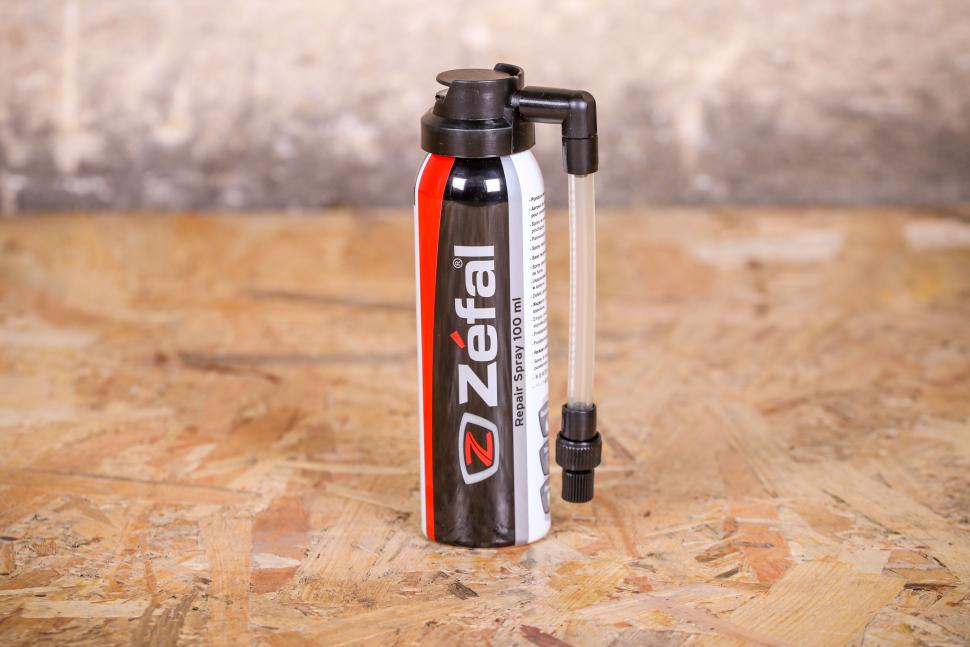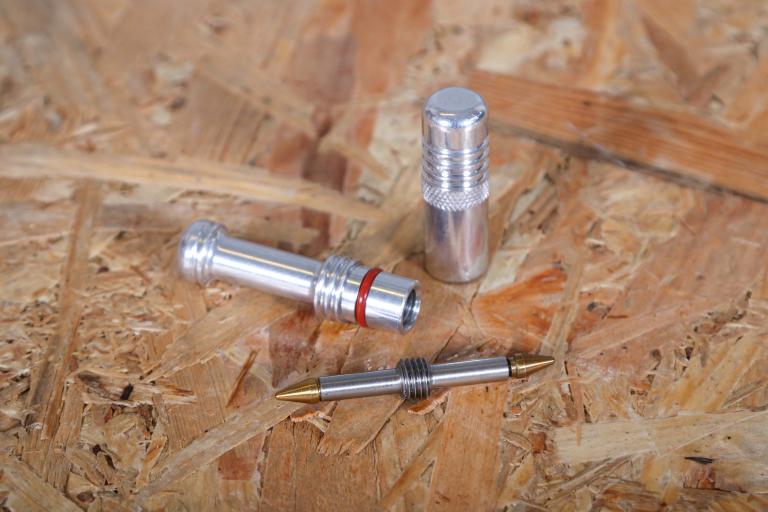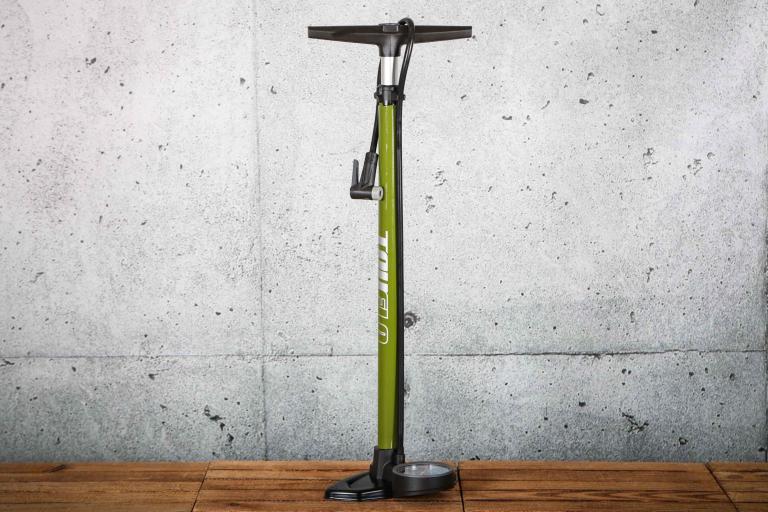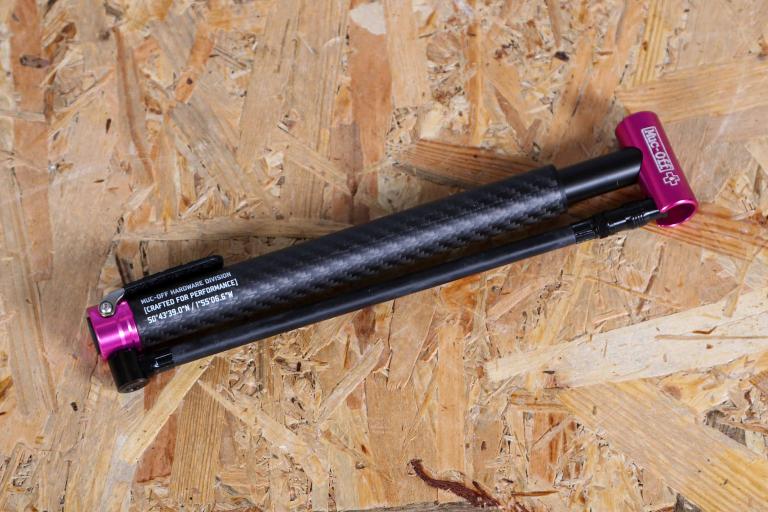- News
- Reviews
- Bikes
- Components
- Bar tape & grips
- Bottom brackets
- Brake & gear cables
- Brake & STI levers
- Brake pads & spares
- Brakes
- Cassettes & freewheels
- Chains
- Chainsets & chainrings
- Derailleurs - front
- Derailleurs - rear
- Forks
- Gear levers & shifters
- Groupsets
- Handlebars & extensions
- Headsets
- Hubs
- Inner tubes
- Pedals
- Quick releases & skewers
- Saddles
- Seatposts
- Stems
- Wheels
- Tyres
- Tubeless valves
- Accessories
- Accessories - misc
- Computer mounts
- Bags
- Bar ends
- Bike bags & cases
- Bottle cages
- Bottles
- Cameras
- Car racks
- Child seats
- Computers
- Glasses
- GPS units
- Helmets
- Lights - front
- Lights - rear
- Lights - sets
- Locks
- Mirrors
- Mudguards
- Racks
- Pumps & CO2 inflators
- Puncture kits
- Reflectives
- Smart watches
- Stands and racks
- Trailers
- Clothing
- Health, fitness and nutrition
- Tools and workshop
- Miscellaneous
- Buyers Guides
- Features
- Forum
- Recommends
- Podcast
 Zefal Repair Spray
Zefal Repair Spray£5.99
VERDICT:
It won't fix every puncture but it'll sort the majority to get you on your way quickly
Weight:
118g
Contact:
At road.cc every product is thoroughly tested for as long as it takes to get a proper insight into how well it works. Our reviewers are experienced cyclists that we trust to be objective. While we strive to ensure that opinions expressed are backed up by facts, reviews are by their nature an informed opinion, not a definitive verdict. We don't intentionally try to break anything (except locks) but we do try to look for weak points in any design. The overall score is not just an average of the other scores: it reflects both a product's function and value – with value determined by how a product compares with items of similar spec, quality, and price.
What the road.cc scores meanGood scores are more common than bad, because fortunately good products are more common than bad.
- Exceptional
- Excellent
- Very Good
- Good
- Quite good
- Average
- Not so good
- Poor
- Bad
- Appalling
This tin of Zefal Repair Spray is a nifty little addition to your ride kit if you aren't a fan of fixing punctures at the side of the road, or are often up against the clock whether racing or commuting. It's not a guaranteed fix for every occasion, but nine times out of ten it'll get you home.
- Pros: Works on the majority of small punctures from thorns and flints; cheap fix
- Cons: Attaching to the valve can be fiddly; only fixes holes up to 2mm
The Zefal Repair Spray isn't a tubeless sealant. It's similar, as in it'll react with the air at the surface of the inner tube or tubeless tyre, turning into a solid to plug the hole, but it is purely a temporary solution to get you home/to work/finish the race.
> Find your nearest dealer here
It doesn't just inject the sealant, though, the compressed gas will also inflate your tyre at the same time – ideal if you are travelling light without tube and pump.
I really don't suffer from a lot of punctures as I tend to keep the pressures up to what most people in this day and age reckon is too hard, but hey, it works for me.
In 2019 with 8,500 miles covered, with a split of about 60/40 between road and gravel, I had maybe three flats. Two were from thorns, so small holes, and the other was a short slit no doubt caused by some glass or flint.
Testing the Repair Spray in the workshop, I replicated these kind of intrusions using a drawing pin and then a 2mm slit with a Stanley knife through a 28mm tyre and an inner tube.
The Repair Spray can be fitted to both Presta and Schrader valves (the former by an adaptor that screws into the end of the tube), although you have to be 100 per cent sure it is on correctly.
With the fittings being plastic, it is very easy to cross thread things if you are in a hurry or being a bit hamfisted, and the first you'll know about it is when the sealant starts going everywhere but in the valve...
If you've fitted it right, though, holding the bottle upside down and pushing the button will see the tyre inflate. I got about 40-50psi into the 28mm tyre – enough to get you home if needs be, but Zefal recommends you ride for about 3km to get the sealant all around the tyre and then inflate it up to your preferred pressure with a pump.
> All you need to know about mini pumps + 6 of the best
I pumped the tyre up to about 80psi and it remained inflated fine for at least the next 24 hours.
After a couple of days the sealant would have dried out and the tube could possibly leak again, but it had done the job of getting me home so that I could fix or replace it.
I say 'would have' dried out, because that is what Zefal says will happen. I couldn't test that because I went on to put a bigger slit into the tyre and tube with the knife, about 1mm thick and 5mm long, just to check Zefal's claims that it'll only work on holes up to 2mm.
It had a pretty good go at fixing the hole but it was just a bit too big to let the sealant set before it was being let out through the hole, so this would be a roadside repair job.
This 100ml tube (75mm and 150ml are available) has an rrp of £5.99, although you can get it for under a fiver if you shop around.
It's more expensive than a patch, but if you are in a rush or the weather is atrocious it certainly pays for itself, in my eyes. Its size also means that it will fit in a jersey pocket, or it is available with a mounting kit.
It certainly looks a bargain compared to the 125ml Kwiki Sealant Inflator at £14.99, although that does look to get more pressure into your tyres by a fair bit, compared to the Zefal.
Decathlon offers its own version for just £1.99 at the time of writing. It only seals holes up to 1mm, though.
Overall, the Zefal is a great little solution to keep you moving when out on the road in the majority of situations. After testing, I've since bought a couple of cans to keep in my rucksack just in case.
Verdict
It won't fix every puncture but it'll sort the majority to get you on your way quickly
road.cc test report
Make and model: Zefal Repair Spray
Size tested: 100ml
Tell us what the product is for and who it's aimed at. What do the manufacturers say about it? How does that compare to your own feelings about it?
Zefal says, "Our Repair Spray repairs and instantly reinflates flat tyres without having to change the inner tube. This type of rapid and simple fix allows you to continue your ride without having to do a repair. The fix isn't long-lasting as the product that is injected dries out in a few days. It is advisable to change the inner tube or to repair it. The Repair Spray becomes less effective against punctures larger than 2mm."
It does exactly what it says on the tin, literally.
Tell us some more about the technical aspects of the product?
Zefal lists:
QUICK AND EASY
No need to change the inner tube whilst out.
COMPATIBLE WITH ALL TYPES OF BIKES
All types of tyres - tubeless or standard with inner tubes.
EASY TO CARRY
Compact, it can be attached to the bike with a mounting system.
Rate the product for quality of construction:
8/10
Rate the product for performance:
8/10
Rate the product for durability:
8/10
Rate the product for value:
7/10
Tell us how the product performed overall when used for its designed purpose
It sealed smaller punctures quickly and without mess.
Tell us what you particularly liked about the product
Can get you out of a fix very quickly.
Tell us what you particularly disliked about the product
Attaching it to the valve can be a little tricky.
How does the price compare to that of similar products in the market, including ones recently tested on road.cc?
It's cheaper than the Kwiki inflator mentioned in the review by a fair bit, and although Decathlon's offering is cheap it doesn't sound as effective.
Did you enjoy using the product? Yes
Would you consider buying the product? I since have.
Would you recommend the product to a friend? Yes
Use this box to explain your overall score
It's great! It would fix the majority of puncture types that I seem to suffer with, and for quite a small outlay too.
About the tester
Age: 41
I usually ride: This month's test bike My best bike is: B'Twin Ultra CF draped in the latest bling test components
I've been riding for: Over 20 years I ride: Every day I would class myself as: Expert
I regularly do the following types of riding: time trialling, commuting, club rides, sportives, fixed/singlespeed
Since writing his first bike review for road.cc back in early 2009 senior product reviewer Stu has tested more than a thousand pieces of kit, and hundreds of bikes.
With an HND in mechanical engineering and previous roles as a CNC programmer/machinist, draughtsman and development engineer (working in new product design) Stu understands what it takes to bring a product to market. A mix of that knowledge combined with his love of road and gravel cycling puts him in the ideal position to put the latest kit through its paces.
He first made the switch to road cycling in 1999, primarily for fitness, but it didn’t take long for his competitive side to take over which led to around ten years as a time triallist and some pretty decent results. These days though riding is more about escapism, keeping the weight off and just enjoying the fact that he gets to ride the latest technology as part of his day job.
Latest Comments
- Webstaff 53 min 12 sec ago
Those same car are also likely to have auto stop....
- Webstaff 1 hour 8 min ago
Also we only get one side of the story when it's social media....
- No Skinny Tyres 1 hour 39 min ago
It's a stabiliser, it was first used in WW2 to preserve chocolate in US rations. It allows the milk solids to fully dissolve, US chocolate is less...
- Rome73 1 hour 55 min ago
LOL , me too the other day, I was on my GSD and got stuck behind a Cadillac Escalade (I think that is what they are called). It was so fat and over...
- eburtthebike 10 hours 26 min ago
The deterrent effect is almost certainly due to the massively increased likelihood of the offence being detected. As with other crimes, if the...
- Martin1857 10 hours 54 min ago
As a member of the Co-op community (I live in a Housing Co-op) and a bike owner /rider, this is very sad news. We need more Co-ops not less.
- Dnnnnnn 10 hours 45 min ago
It is sad for the individuals concerned but (and this is a general point, rather than specific to this story), we're much better off overall for...
- No Reply 11 hours 36 min ago
I agree with Pogacar regarding social media. The likes of Facebook, Instagram have done untold damage, especially to the minds of young people....
- David9694 11 hours 40 min ago
Lorry carrying 25 tonnes of beer catches fire on the M11...
- ktache 12 hours 45 min ago
That looks like a fun bike. Frame only, 2 and an 1/2 grand.




Add new comment
10 comments
I've been thinking about how to fix my old style tubulars without removable valve cores.
You don't need to have removable valve cores with this product right?
I can see several use cases for this stuff - but my concern is that once it's been in my saddlebag (yes!) for many months, will it still be useable? What is the shelf-life of the cannister, and how will I know that it has lost all its pressure and therefore useless?
A non-refillable canister, single-use plastic nozzle and adapter. Sounds like a lot of waste for mere convenience. Even if you don't care about the former, it's not likely to be much of an improvement on the latter score, as in real world conditions most punctures which are small enough to be treatable by this will be caused by things you'll have to take the tyre off to remove.
But if it won’t work on anything over 2mm, surely you need to still carry a spare tube and tyre levers just in case it won’t fix? And a pump or presumably CO2 inflator (is it compatible with CO2?) to get the tyre up to pressure. Do you leave items like thorns/ shards of glass embedded in the tyre? If not then usually you have to take the tyre off to find them and push them out.
So why not just carry a spare tube, some small patches (for a second puncture), 2 tyre levers, a tyre patch, pump and be able to fix ALL punctures including those bigger than 2mm (within reason as obviously as a 2”+ rip in a side wall will be catastrophic unless you carry a whole new tyre)?
To me it looks like another bulky little item that offers some convenience and may save you a little time and effort, but means you will just have to carry yet another item of kit, or just carry this and risk being stranded. Most people can fix a puncture by changing a tube in under ten minutes and be back on the road.
I can almost buy the ‘use whilst racing’ argument, but would have thought that even the 2mins it is going to take to administer and get back on the bike would be enough for your race to be over anyway. If that’s the case, the spare tube and CO2 would work just as well to get you home. Maybe worth the slight weight saving if it is just to get you to the finish if your race is over anyway.
PP
It's dark, raining, you can't feel your fingers and you have 10 miles to get home on your commute...this may or may not be a godsend.
If it works! I found slime inner tubes crap with road tyres/pressures...maybe this will be ok at the lower pressures stated?
Still a bit expensive though. It's a shame it can't be made reusable with a plugin in co2 inflator and a separate bottle for you to top.up the sealant
In a 50 mile TT with tubs a walk back to the start in cleats and a skinsuit is going to take a while...
Isn't this just the 1990s version of tubeless?
Basically, yes. I used to carry and use the similar Vittoria Pit Stop when time trialling on tubulars. It got me over the finish line a fair few times over the years!
Is the inner tube a write off after using this stuff, or can you still apply a proper patch later (at home) as normal? What about the remaining gunk inside the tube?
You can fix and reuse the inner tube as soon as you've finished your ride with the rest of the sealant in the tube drying out after a couple of days.